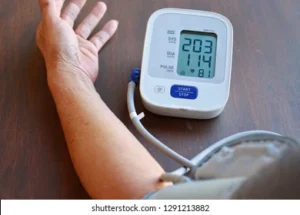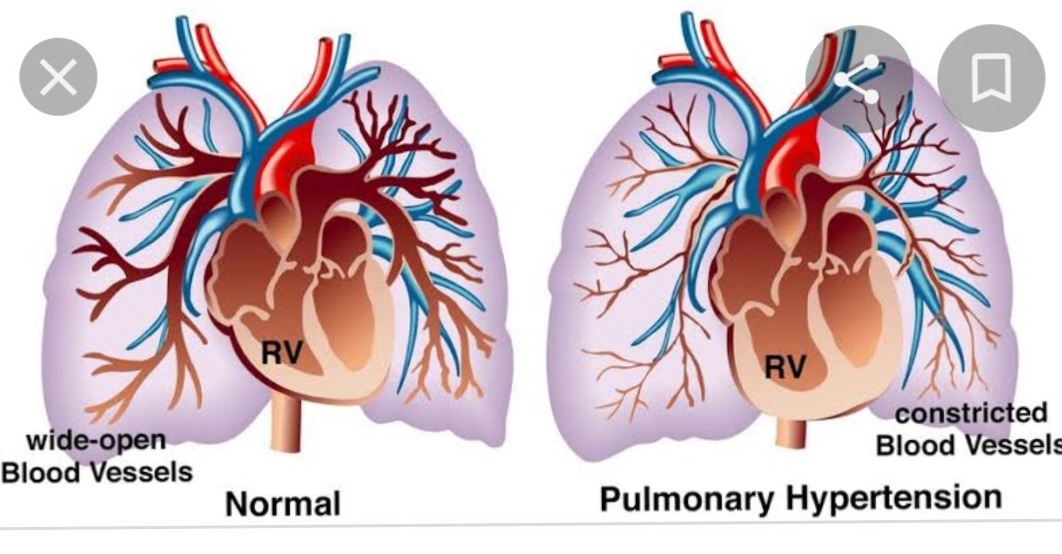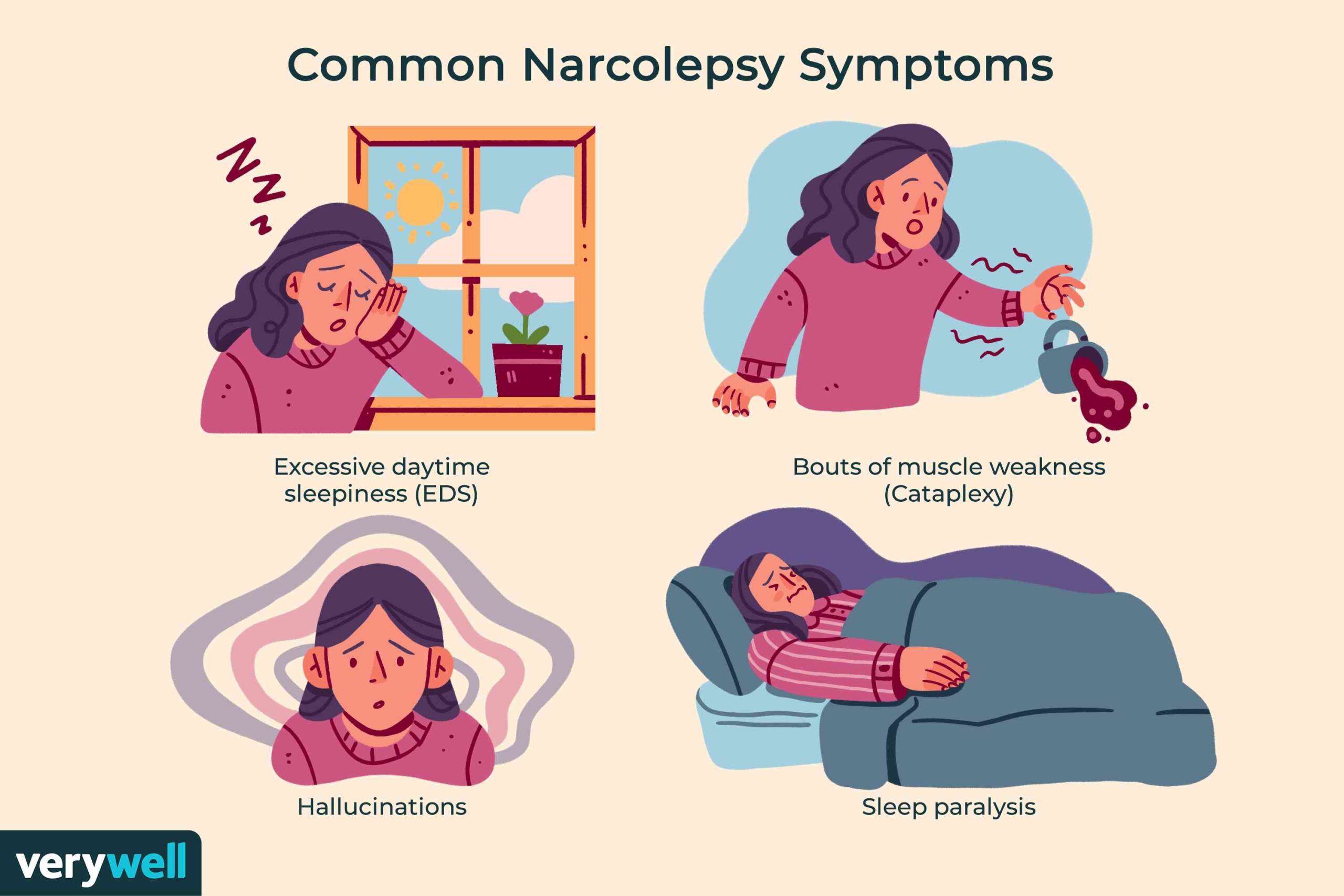High blood pressure treatment-various aspects–
For the majority of individuals with elevated blood pressure, a healthcare provider will collaborate with you to create a treatment plan that may incorporate heart-healthy lifestyle adjustments alone or alongside medications. Your provider can assist you in managing your blood pressure and alleviating complications. They might utilize a risk calculator to assess your likelihood of experiencing complications and initiate a conversation with you about selecting the most suitable treatments.


High blood pressure, referred to as hypertension, can be managed through lifestyle modifications and medications:
Lifestyle modifications
These may consist of:
Diet: Consume a heart-healthy diet with reduced salt and increased fruits and vegetables. Consider trying the DASH diet, which emphasizes fruits and vegetables while minimizing saturated fat. Additionally, incorporate more foods that are rich in potassium, such as bananas, spinach, and sweet potatoes.
Exercise: Engage in at least 150 minutes of moderate-intensity aerobic activity or 75 minutes of vigorous aerobic activity each week. It is also beneficial to perform strength training exercises on at least two separate days weekly.
Weight: If you are overweight or obese, shedding 5–10% of your weight can assist in reducing your risk of health complications.
Alcohol and caffeine: Restrict your alcohol consumption to a maximum of 14 units each week. Furthermore, steer clear of beverages that are high in caffeine, such as coffee, tea, and cola.
Sleep: Aim for 7–9 hours of sleep each night.
Stress: Strive to evade stressors and allocate time to unwind.
Your physician-MD -GENERAL MEDICINE DOCTOR may also bring in additional specialists for your High blood pressure treatment, such as a nutritionist or dietician, a pharmacist, and experts for any other conditions you might have, including cardiac conditions. If your high blood pressure is a result of another health issue or medication, it may improve once the underlying cause is addressed or eliminated.
If you are suffering from high blood pressure it is always better to consult a qualified and experienced MD General Medicine doctor-Physician-Many people ask then why to read all this text -the reason is that it helps you to understand the pathology better ,you can cooperate with treatment better ,your treating physician is already busy with his patients and he does not have sufficient time to explain you all the things right from ABCD.
10 ways to manage high blood pressure without medication
By implementing these 10 lifestyle modifications, you can reduce your blood pressure and lower your chances of heart disease.
If you are experiencing high blood pressure, you might question whether medication is necessary for treatment. However, lifestyle modifications are essential in managing high blood pressure. Controlling blood pressure through a healthy lifestyle might avert, postpone, or diminish the necessity for medication.
Here are 10 lifestyle modifications that can decrease blood pressure and maintain it at lower levels.
1. Shed excess weight and monitor your waistline
Blood pressure frequently rises as body weight increases. Carrying extra weight can also lead to interrupted breathing during sleep, a condition known as sleep apnea. Sleep apnea further elevates blood pressure.
Weight reduction is among the most effective methods to regulate blood pressure. If you are overweight or suffer from obesity, losing even a modest amount of weight can aid in lowering blood pressure. Blood pressure readings are in millimeters of mercury (mm Hg). Generally, blood pressure may decrease by approximately 1 mm Hg for every kilogram (around 2. 2 pounds) of weight lost.
Additionally, waist circumference is crucial. Accumulating excess weight around the waist can heighten the risk of high blood pressure.
In general:
Men face risk when their waist size exceeds 40 inches (102 centimeters).
Women face risk when their waist size exceeds 35 inches (89 centimeters).
These figures may vary among different ethnic groups. Consult your healthcare provider regarding a healthy waist measurement for you.
2. Exercise regularly
Regular aerobic activity can reduce high blood pressure by approximately 5 to 8 mm Hg. It’s essential to maintain a consistent exercise routine to prevent blood pressure from increasing again. As a general goal, strive for at least 30 minutes of moderate physical activity on a daily basis.
Exercise can also assist in preventing slightly elevated blood pressure from progressing to high blood pressure, known as hypertension. For individuals with hypertension, consistent physical activity can help reduce blood pressure to safer levels.
Examples of aerobic exercises that can aid in lowering blood pressure include walking, jogging, cycling, swimming, and dancing. High-intensity interval training is another beneficial form of exercise. This training consists of combining short periods of intense activity with intervals of lighter activity.
Strength training can also contribute to lowering blood pressure. Aim to incorporate strength training exercises at least twice a week. Consult with a healthcare professional about creating an exercise program tailored to your needs.
3. Eat a healthy diet
Consuming a diet that is abundant in whole grains, fruits, vegetables, and low-fat dairy products while being low in saturated fat and cholesterol can reduce high blood pressure by up to 11 mm Hg. Dietary plans that may help manage blood pressure include the Dietary Approaches to Stop Hypertension (DASH) diet and the Mediterranean diet.
Potassium in the diet may mitigate the impact of table salt and sodium on blood pressure. Food manufacturers frequently add sodium to processed foods to enhance their salty taste. Aim for 3,500 to 5,000 milligrams (mg) of potassium daily. This may lower blood pressure by 4 to 5 mm Hg. Consult your healthcare professional regarding the appropriate amount of potassium for you.
4. Reduce salt and sodium in your diet
Even a minor reduction in sodium intake can enhance heart health and lower blood pressure. The impact of sodium on blood pressure differs among various populations. Generally, limit sodium to 2,300 mg per day or less. However, for the majority of adults, it’s best to restrict sodium to 1,500 mg daily or less. Doing so may decrease high blood pressure by approximately 5 to 6 mm Hg.
To reduce sodium in your diet:
Read food labels. Seek out low-sodium options for foods and beverages.
Reduce consumption of processed foods. A minimal amount of sodium is naturally present in foods, as most sodium is added during processing.
Avoid adding table salt. Use herbs or spices to enhance the flavor of food.
Cook. Preparing meals yourself allows you to control the sodium content in your food.
5. Limit alcohol
Restricting alcohol consumption to less than one drink daily for women or two drinks daily for men can assist in lowering blood pressure by about 4 mm Hg. One drink is equivalent to 12 fluid ounces of beer, 5 ounces of wine, or 1. 5 ounces of 80-proof liquor.
Excessive alcohol intake can elevate blood pressure significantly. It can also diminish the effectiveness of blood pressure medications.
6. Stop smoking
Smoking elevates blood pressure. Quitting smoking aids in lowering blood pressure. It may also decrease the likelihood of heart disease and enhance overall health, potentially resulting in a longer lifespan.
7. Ensure a good night’s sleep
Consistently getting less than seven hours of sleep nightly for several weeks can contribute to hypertension. Factors that can interfere with sleep consist of sleep apnea, restless leg syndrome, and general insomnia.
Adults should strive to obtain 7 to 9 hours of sleep each night. Inform your healthcare provider if you frequently experience sleep difficulties. Identifying and addressing the underlying issue can help enhance sleep. However, if you do not have sleep apnea or restless leg syndrome, follow these straightforward tips for achieving more restorative sleep.
Maintain a sleep routine. Go to bed and awaken at the same time every day. Attempt to sustain the same routine on weeknights and on weekends.
Establish a calming environment. This involves keeping the sleep area cool, quiet, and dark. Engage in a relaxing activity in the hour leading up to bedtime. This might involve taking a warm bath or performing relaxation exercises. Switch off or dim bright lights, such as those from a TV, phone, or computer screen.
Be mindful of what you consume. Avoid going to bed feeling hungry or overly full. Refrain from having substantial meals close to bedtime. Limit or eliminate nicotine, caffeine, and alcohol in the hours leading up to bedtime as well.
Limit daytime naps. For those who find daytime napping beneficial, restrict naps to 30 minutes and take them earlier in the day. You might sleep better at night.
8. Manage stress
Chronic stress might contribute to elevated blood pressure. Further studies are necessary regarding the impact of stress relief methods to determine if they can reduce blood pressure.
However, it can be beneficial to identify what triggers your stress, such as work, family, finances, or health issues. Once you identify the sources of your stress, you can discover methods to manage them. Consider the following:
Do not overextend yourself. Organize your day and concentrate on your most essential tasks. Learn to decline additional commitments. Allocate sufficient time to accomplish necessary tasks.
Concentrate on factors you can influence and devise plans to address them. For a workplace issue, consult a manager. For conflicts with your children or partner, seek solutions to resolve them.
Avoid stressors. For instance, if rush-hour traffic stresses you, travel during off-peak times or utilize public transportation. Steer clear of individuals who induce stress whenever possible.
Dedicate time to unwind. Set aside time each day to sit in silence and breathe deeply. Make time for enjoyable activities or hobbies, such as taking a walk, cooking, or volunteering.
Practice gratitude. Expressing appreciation to others can aid in alleviating stress.
9. Monitor your blood pressure at home and schedule regular checkups
You can check your blood pressure at home to ensure that your medications and lifestyle adjustments are effective.
Home blood pressure monitors are widely accessible and do not require a prescription. Consult a healthcare professional regarding home monitoring before you begin.
Regular appointments with a healthcare professional are also crucial for managing blood pressure. If your blood pressure is well managed, inquire with your healthcare professional about how frequently you should monitor it. You may only need to check it once daily or less frequently.
10. Manage your cholesterol and blood sugar
Elevated blood sugar and high levels of “bad” non-HDL cholesterol increase the risk of heart disease. To assist in controlling cholesterol and blood sugar, adopt some of the same healthy practices that help lower blood pressure. Consume nutritious foods, engage in physical activity, shed excess weight, and avoid smoking. Adhere to your healthcare professional’s guidance on managing cholesterol and blood sugar.
Implementing these 10 lifestyle changes is a long-term endeavor, and at times it may seem difficult. Therefore, seek support from your family or friends when necessary. Your loved ones could motivate you to prioritize your health, drive you to medical appointments, or join you in an exercise regimen to help maintain low blood pressure.
If you feel you require assistance beyond your family and friends, consider joining a support group. This could connect you with individuals who can uplift your mood or enhance your confidence. The support group can also provide practical advice for managing your condition.
Alpha blockers, also referred to as α-blockers or α-adrenoreceptor antagonists, constitute a category of pharmacological agents that function as antagonists on α-adrenergic receptors (α-adrenoceptors).
In the past, alpha-blockers were utilized as a means for pharmacological research to further comprehend the autonomic nervous system. By employing alpha blockers, researchers began to define arterial blood pressure and central vasomotor regulation within the autonomic nervous system. Nowadays, they are available as clinical interventions for a select number of illnesses.
Alpha blockers can manage a limited spectrum of medical conditions like hypertension, Raynaud’s disease, benign prostatic hyperplasia (BPH), and erectile dysfunction. Broadly speaking, these therapies operate by attaching an α-blocker to α receptors in the arteries and smooth muscle. Ultimately, based on the kind of alpha receptor, this results in the relaxation of smooth muscle or blood vessels, which enhances fluid circulation within these systems.
Classification
Schematic of G protein-coupled receptor signaling, illustrating Gi GPCR signaling, Gs GPCR signaling, and Gq GPCR signaling.
α1-blockers target α1-adrenoceptors
α2-blockers target α2-adrenoceptors
When the expression “alpha blocker” is mentioned without additional specification, it may denote an α1 blocker, an α2 blocker, a nonselective blocker (active on both α1 and α2), or an α blocker with some β activity. [2] Nevertheless, the most prevalent form of alpha blocker is often an α1 blocker.
Non-selective α-adrenergic receptor antagonists comprise:
Phenoxybenzamine
Phentolamine
Tolazoline
Trazodone
Selective α1-adrenergic receptor antagonists consist of:
Alfuzosin
Doxazosin
Prazosin (inverse agonist)
Tamsulosin
Terazosin
Silodosin
Selective α2-adrenergic receptor antagonists involve:
Atipamezole
Idazoxan
Mirtazapine
Yohimbine
Lastly, the medications carvedilol and labetalol are both classified as α and β-blockers.
Presented below are some of the most frequently prescribed drugs in clinical settings.
| Drug Name | Common Brands | Structure | Mechanism of Action | Effects | Clinical Applications | Toxicity |
|---|---|---|---|---|---|---|
| Phenoxybenzamine | Dibenzyline |   |
Nonselective covalent binding to α1 and α2 receptors.Irreversibly binds. | Lowers blood pressure by decreasing peripheral resistance.Blocks alpha induced vasconstriction. |
|
|
| Phentolamine | Regitine |   |
Competitive blocking of α1 and α2 receptors.4 hours of action after initial administration. | Reversal of epinephrine induced effects.Lowers blood pressure by decreasing peripheral resistance. |
|
|
| Prazosin | Minipress |   |
Inverse agonist of α1 receptor. | Lowers blood pressure. |
|
|
| Doxazosin | CarduraCardura XL |   |
Competitive blocking of α1 receptor. | Lowers blood pressure. |
|
|
| Terazosin | Hytrin |   |
Competitive blocking of α1 receptor. | Lowers blood pressure. |
|
|
| Tamsulosin | Flomax |   |
A blocker that has slight selectivity for α1 receptors. | Relaxation of prostatic smooth muscle. |
|
|
| Yohimbine | Yocon |   |
Blocks α2 receptor, and increases norepinephrine release, thus increasing CNS activity. | Raises blood pressure and heart rate. |
|
|
| Labetalol | Trandate |   |
Blocks some α1 receptor activity, but binds more strongly to β receptors. | Lowers blood pressure, increases heart rate slightly. |
|
|
| Carvedilol | CoregCoreg CR |   |
Blocks some α1 receptor activity, but binds more strongly to β receptors. | Can interfere with noradrenergic mechanisms. |
|
Medical uses
Although clinical α-blocker applications are limited, with most α-blockers utilized for hypertension or benign prostatic hyperplasia, they can also be employed to address a few other conditions, including Raynaud’s disease, congestive heart failure (CHF), pheochromocytoma, and erectile dysfunction.
In addition, α-blockers can sometimes be used for treating anxiety and panic disorders, such as nightmares induced by posttraumatic stress disorder (PTSD). Research has also shown significant medical interest in evaluating alpha blockers, particularly α2 blockers, for the treatment of type II diabetes and psychiatric depression.
Hypertension
Hypertension arises from an increase in vascular resistance and vasoconstriction. Employing α1 selective antagonists, like prazosin, has proven effective in managing mild to moderate hypertension. This effectiveness stems from their capacity to lower vascular resistance and reduce pressure. Nevertheless, although these medications are generally well accepted, they can lead to side effects such as orthostatic hypotension and dizziness. However, in contrast to other hypertension treatments like ACE inhibitors, ARBs, calcium channel blockers, thiazide diuretics, or beta blockers, alpha blockers have not shown comparable mortality and morbidity benefits, and thus are not typically considered first-line or even second-line agents.
Another approach for treating hypertension involves utilizing drugs that possess both α1 blocking properties and nonselective β activity, such as Labetalol or carvedilol. At low dosages, labetalol and carvedilol can reduce peripheral resistance and counteract the effects of isoprenaline to alleviate hypertensive symptoms.
Pheochromocytoma
An image of a patient with pheochromocytoma. In individuals diagnosed with this condition, a catecholamine-secreting tumor develops, leading to heightened CNS stimulation, which includes excessive sweating and tachycardia. Nonselective alpha blockers, such as phenoxybenzamine or phentolamine, can be utilized to help manage this condition.
Pheochromocytoma is characterized by the development of a catecholamine secreting tumor. Specifically, these tumors secrete norepinephrine and epinephrine, either constantly or at intervals. The excessive release of these catecholamines heightens central nervous system stimulation, resulting in an increase in vascular resistance in blood vessels, which ultimately leads to hypertension. Additionally, individuals with these rare tumors frequently experience headaches, heart palpitations, and increased sweating.
Phenoxybenzamine, a nonselective α1 and α2 blocker, has been administered for treating pheochromocytoma. This medication inhibits the activity of epinephrine and norepinephrine by antagonizing the alpha receptors, thereby reducing vascular resistance, enhancing vasodilation, and ultimately lowering blood pressure.
Congestive heart failure
Medications that can block both α and β receptors, such as carvedilol, bucindolol, and labetalol, have the potential to alleviate symptoms associated with congestive heart failure. By binding to both the α and β receptors, these drugs can diminish cardiac output and promote the dilation of blood vessels, which aids in lowering blood pressure.
Erectile dysfunction
Yohimbine, an α2 antagonist sourced from the bark of the Pausinystalia johimbe tree, has been evaluated for its potential to enhance libido and address erectile dysfunction. The suggested mechanism for yohimbine involves the blocking of adrenergic receptors linked to the inhibition of neurotransmitters, such as dopamine and nitric oxide, thereby supporting penile erection and libido. In this manner, it can modify the blood flow in the penis to facilitate the achievement of an erection. Nonetheless, various side effects may manifest, including palpitations, tremors, increased blood pressure, and anxiety. Yohimbe bark contains alkaloids that block both α1 and α2 adrenergic receptors.
Phentolamine, a non-selective alpha antagonist, has likewise been investigated for the treatment of erectile dysfunction. By diminishing vasoconstriction in the penis, it seems to enhance blood flow, which assists in penile erection. Side effects related to phentolamine encompass headaches, flushing, and nasal congestion.
Benign prostate hyperplasia refers to a condition in which urinary retention becomes problematic. Alpha-1 blockers may be utilized, but they can lead to side effects like increased urination and retrograde ejaculation. Phenoxybenzamine, a non-competitive α1 and α2 blocker, was utilized by Dr. Giles Brindley during the first intracavernosal pharmacotherapy for erectile dysfunction.
Benign prostatic hyperplasia
In benign prostatic hyperplasia (BPH), men face urinary obstruction and cannot urinate, resulting in urinary retention. α1 specific blockers have been employed to relax the smooth muscle of the bladder and the enlarged prostate. Prazosin, doxazosin, and terazosin have proven particularly beneficial for patients with BPH, especially those also experiencing hypertension. In these cases, these medications can effectively address both issues simultaneously. For patients without hypertension, tamsulosin may be used, as it relaxes the smooth muscle in the bladder and prostate without causing significant alterations in blood pressure.
Raynaud’s disease
Individuals suffering from Raynaud’s syndrome experience reduced blood flow to the fingers, resulting in a significant decrease in oxygen, which causes discoloration of the fingers. The use of alpha blockers helps restore blood flow and treat the syndrome by promoting the dilation of blood vessels. Both α1 blockers and α2 blockers have been studied to manage Raynaud’s disease. While α1 blockers, such as prazosin, have shown minimal improvement for Raynaud’s disease’s sclerotic symptoms, numerous side effects can arise from this medication. In contrast, α2 blockers, like yohimbine, seem to offer significant relief from the sclerotic symptoms of Raynaud’s disease with fewer adverse effects.
Post traumatic stress disorder
Individuals with posttraumatic stress disorder (PTSD) often continue to exhibit symptoms despite receiving PTSD-targeted treatments. Moreover, patients with PTSD frequently endure distressing nightmares that persist, regardless of their medications. High doses of the α1 blocker, prazosin, have proven effective in alleviating nightmares induced by PTSD owing to its capacity to obstruct the effects of norepinephrine.
Adverse effects of prazosin when used for PTSD nightmares include dizziness, first dose effect (a sudden loss of consciousness), weakness, nausea, and fatigue.
Adverse effects
Even though alpha blockers can alleviate certain disease pathologies, they come with some associated side effects. Nevertheless, due to the various structural compositions that differentiate each alpha blocker, the side effects vary for every specific medication. Side effects that may occur from using alpha blockers can consist of the first dose effect, cardiovascular side effects, genitourinary side effects, along with additional side effects.
First dose effect
A commonly observed side effect associated with alpha blockers is the first dose effect. This phenomenon occurs when hypertensive patients take an alpha blocker for the first time and subsequently experience a significant drop in blood pressure. Ultimately, this results in orthostatic hypotension, dizziness, and a sudden loss of consciousness caused by the steep decline in blood pressure.
Alpha blockers that exhibit these side effects comprise prazosin, doxazosin, and terazosin.
Cardiovascular side effects
Certain alpha blockers may lead to modifications in the cardiovascular system, such as inducing reflex tachycardia, orthostatic hypotension, or heart palpitations through changes in the QT interval. Alpha blockers that can exhibit these side effects include yohimbine, phenoxybenzamine, and phentolamine.
Genitourinary side effects
When alpha blockers are utilized to treat BPH, they cause vasodilation of blood vessels in the bladder and the prostate, thereby generally increasing urination. However, these alpha blockers may also lead to an opposing side effect, where edema, or abnormal fluid retention, occurs.
Furthermore, due to the relaxation of prostate smooth muscle, impotence and the inability to ejaculate may arise in men undergoing treatment for BPH. Nevertheless, if any ejaculatory activity occurs, it frequently results in a phenomenon known as retrograde ejaculation, where semen travels into the urinary bladder rather than exiting through the urethra.
Medications that could produce such side effects include prazosin, terazosin, tamsulosin, and doxazosin.
Other side effects
Ultimately, there are additional general side effects that most alpha blockers can cause (although they are observed more often in alpha-1 blockers). Such side effects may include dizziness, drowsiness, weakness, fatigue, psychiatric depression, and dry mouth.
Priapism, an undesired, painful prolonged erection not resulting from sexual arousal and lasting for several hours, has been linked to the use of alpha blockers. Though this is exceedingly rare, particularly with tamsulosin, it may lead to permanent impotence if not addressed in a hospital environment. Male patients should be informed about this possibility, as it can occur following a single dose or develop over time.
Contraindications
There is only one major indication for alpha blockers, which is for benign prostatic hyperplasia. Patients requiring alpha blockers for BPH who have a history of hypotension or postural heart failure should use these medications cautiously, as it may lead to an even greater fall in blood pressure or worsen heart failure. The most significant contraindication is urinary incontinence and general fluid retention. To address such fluid retention, patients may take a diuretic alongside the alpha-blocker.
In instances where compelling indications or contraindications are absent, patients should consider alpha blockers as a step 4 therapy to lower blood pressure, but only if the administration of ACE inhibitors, angiotensin-II receptor blockers, calcium channel blockers, or thiazide diuretics (in full doses or in combinations) has not been effective.
Drug interactions
Similar to any medication, there are potential drug interactions that can arise with alpha blockers. For example, alpha blockers utilized for blood pressure reduction, such as phenoxybenzamine or phentolamine, can synergize with other medications that influence smooth muscle, blood vessels, or those used for erectile dysfunction (i. e. , sildenafil, tamsulosin, etc. ). This can trigger marked hypotension.
Alternative alpha blockers, including prazosin, tamsulosin, doxazosin, or terazosin, may have adverse interactions with beta blockers, medications for erectile dysfunction, anxiolytics, and antihistamines. Again, these interactions can lead to hazardous hypotension. Moreover, in rare instances, drug interactions may result in irregular, rapid heartbeats or elevated blood pressure.
Yohimbine may interact with stimulants, antihypertensive drugs, naloxone, and clonidine. Interactions with these medications can cause either an unintended rise in blood pressure or enhance an increase in blood pressure.
Lastly, in medications exhibiting both alpha and beta blocking characteristics, such as carvedilol and labetalol, interactions with other alpha or beta blockers can amplify the reduction in blood pressure. Conversely, there can also be interactions involving carvedilol or labetalol that unintentionally elevate blood pressure (for instance, with cough and cold medications). Furthermore, there might also be certain alpha/beta blocker drug interactions that can exacerbate previous heart failure.
Mechanism of action
Alpha blockers function by inhibiting the influence of nerves in the sympathetic nervous system. This is achieved by binding to the alpha receptors located in smooth muscle or blood vessels. α-blockers can attach both reversibly and irreversibly.
Various α receptors are distributed throughout the body where these medications can bind. In particular, α1 receptors can be found in the majority of vascular smooth muscle, the pupillary dilator muscle, the heart, the prostate, and pilomotor smooth muscle. Conversely, α2 receptors can be located in platelets, cholinergic nerve terminals, some vascular smooth muscle, postsynaptic CNS neurons, and adipocytes.
The architecture of α receptors is a traditional G protein–coupled receptors (GPCRs) comprising 7 transmembrane domains, which create three intracellular loops and three extracellular loops. [2] These receptors are associated with heterotrimeric G proteins made up of α, β, and γ subunits. While both α receptors belong to the GPCR family, there are significant distinctions in their mechanisms of action. In particular, α1 receptors are distinguished as Gq GPCRs, transmitting signals through Phospholipase C to elevate IP3 and DAG, thereby enhancing calcium release. Conversely, α2 receptors are classified as Gi GPCRs, which convey signals through adenylyl cyclase to diminish cAMP.
Since the α1 and α2 receptors function through different mechanisms, their antagonists also produce varying effects. α1 antagonists can block the release of IP3 and DAG to lower calcium release, hence reducing overall signaling. In contrast, α2 antagonists inhibit the decrease of cAMP, which consequently results in an increase in overall signaling.
Research indicates that lowering your systolic blood pressure to below 120 mm Hg can decrease your chances of experiencing severe complications.
Risk calculators
Your physician-MD -GENERAL MEDICINE DOCTOR might employ a risk calculator to estimate your probability of suffering a stroke, heart attack, or dying from heart or vascular disease. This information can assist both of you in selecting the most effective treatment to avert long-term complications.
For instance, the Atherosclerotic Cardiovascular Disease (ASCVD) Risk Estimator considers your cholesterol levels, age, sex, race, and blood pressure. It also takes into account whether you smoke or use medications to manage high blood pressure or cholesterol.
Remember that your cholesterol figures and your risk score represent only a segment of the full picture. It is important to consult with your physician-MD -GENERAL MEDICINE DOCTOR to understand what these numbers signify for you. Furthermore, the ASCVD Risk Estimator Plus is not the only type of risk calculator — and this is beneficial since no single risk calculator applies universally to all individuals. For example, your physician-MD -GENERAL MEDICINE DOCTOR might utilize the Predicting Risk of cardiovascular disease EVENTs (PREVENTTM) app to assist in evaluating your risk for serious complications. Research demonstrates that some calculators may overestimate risk for particular groups, while others could underestimate it. Discuss your personal risk level with your physician-MD -GENERAL MEDICINE DOCTOR .
Healthy lifestyle changes
If you have high blood pressure, your provider may advise you to embrace a heart-healthy lifestyle to aid in lowering and managing high blood pressure.
Select heart-healthy foods, such as those included in the DASH eating plan. NHLBI-funded research has demonstrated that the DASH approach combined with a low-salt eating plan can be as effective as medications in reducing high blood pressure. Living With the DASH Eating Plan and Tips to Reduce Salt and Sodium provide further details.
Minimize or avoid alcohol. Consult your physician-MD -GENERAL MEDICINE DOCTOR regarding your alcohol consumption. You may need to reduce or cease drinking. Resources and support can be found at the Alcohol Treatment Navigator from the National Institute on Alcohol Abuse and Alcoholism.
Get consistent physical activity. There are numerous health advantages to obtaining the suggested amount of physical activity each week. Research has indicated that physical activity can aid in lowering and controlling high blood pressure levels. Even a little bit of physical activity can be beneficial, such as walking for 10 minutes daily.
Decreasing the duration of your sitting time each day can also assist you in reaching your blood pressure target. Prior to initiating any exercise regimen, consult your provider about what level of activity suits you.
Strive for a healthy weight. If you are an adult experiencing overweight or obesity, shedding 5% to 10% of your weight within 6 months can enhance your health. Even reducing your weight by just 3% to 5% can positively affect blood pressure.
Cease smoking. The Tips to Quit Smoking Fact Sheet provides guidance on how to quit smoking.
Control stress. Acquiring skills to manage stress and address problems can enhance your mental and physical well-being. Relaxation strategies, engaging in discussions with a counselor, and locating a support group can all be beneficial.
Ensure adequate quality sleep. The suggested amount for adults is 7 to 9 hours of sleep each day. Create healthy sleep practices by adhering to consistent sleep and wake times, establishing a soothing bedtime routine, and keeping your bedroom cool and dark.
Altering habits can be challenging. To facilitate lasting heart-healthy changes over a lifetime, consider making one change at a time. Introduce another change when you feel at ease with the previous one. Implement a few healthy lifestyle habits simultaneously. When you can maintain them over time, you’re more likely to effectively manage your blood pressure.
Medicines
When healthy lifestyle modifications alone do not manage or reduce high blood pressure, your physician-MD -GENERAL MEDICINE DOCTOR may recommend blood pressure medications. These medications function in various ways to decrease blood pressure. When suggesting medications, your provider also takes into account their impacts on other conditions you may have, such as heart or kidney disease.
Maintain your healthy lifestyle modifications while using these medications. The combination of medications and heart-healthy lifestyle practices can assist in managing and lowering your high blood pressure and preventing heart disease.
Discuss any concerns regarding side effects from the medications with your physician-MD -GENERAL MEDICINE DOCTOR . Your provider might adjust the dosage or prescribe a different medication. To manage high blood pressure effectively, many individuals require two or more medications.
There are several typical high blood pressure medications your physician-MD -GENERAL MEDICINE DOCTOR can prescribe:
Angiotensin-converting enzyme inhibitors prevent your blood vessels from narrowing as significantly.
Angiotensin II receptor blockers also inhibit blood vessels from narrowing.
Calcium channel blockers stop calcium from entering the muscle cells of your heart and blood vessels. This allows blood vessels to relax.
Diuretics eliminate excess water and sodium (salt) from your system, reducing the volume of fluid in your blood. The primary diuretic for the management of high blood pressure is thiazide. Diuretics are frequently used alongside other antihypertensive medications, occasionally in a single combined tablet.
If you intend to become pregnant or are already pregnant, discuss with your physician-MD -GENERAL MEDICINE DOCTOR the medications you are using to manage your blood pressure. Not every medication is safe to use during pregnancy, although some are-FOR FURTHER INFORMATION IN GREAT DETAIL PL CLICK ON THE LINK GIVEN BELOW-It is always better to view links from laptop/desktop rather than mobile phone as they may not be seen from mobile phone. ,in case of technical difficulties you need to copy paste this link in google search. In case if you are viewing this blog from mobile phone you need to click on the three dots on the right upper corner of your mobile screen and ENABLE DESKTOP VERSION .
For update on further important health related topics and frequently asked questions on health topics by general population please click on the link given below to join our WhatsApp group –
https://chat.whatsapp.com/Lv3NbcguOBS5ow6X9DpMMA
Issued in public interest by –
www.entspecialistinnashik.com





